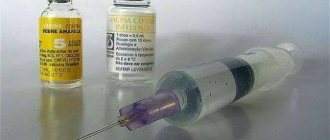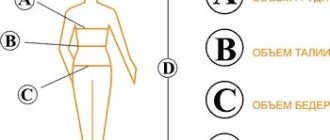The heart rate of children in different age categories varies significantly. What is normal for a newborn child is already pathological in school-age children. Heart rate depends on the degree of maturation of the myocardium and nervous system.
The article talks about the normal heart rate in children. The distribution of heart rate in different age categories is presented.
Determining a child's heartbeat must take into account age
Definition of the term
Heart rate is the heart rate, that is, the number of contractions of the atria and ventricles that the heart makes in one minute. Heart rate is one of the main indicators of the functional state of the heart. Thanks to cardiac contractions, blood moves from the heart to the vessels, delivering it to all organs.
When the heart rate is too low or too high, hemodynamics suffer - the organs do not receive enough blood, and the heart experiences a greater load. Significant fluctuations in heartbeat are a sign of cardiac pathology.
In an adult, this figure is in the range of 60-90 beats per minute. The heart rate in children is different and depends on the age of the child.
Slow heart rate in children
A slowing of the heart rate that occurs at rest is called bradycardia. In normal health, this heart rate indicator indicates the strength of the heart muscle and the general fitness of the child’s body. Athletes who engage in sports that require special endurance have a heart rate of 35 to 40 beats per minute. If during bradycardia the child feels unwell, complains of constant dizziness, quickly loses strength, and blood pressure levels change, then it is necessary to urgently contact a highly qualified pediatrician.
Heart rate indicators in different age categories
Heart rate and respiratory rate in children are the main indicators that must be measured at doctor’s appointments. There is a certain gradation in the distribution of these indicators in children of different ages.
There is also a difference in heart rate between boys and girls. Below is a table of heart rate norms for children of different ages.
Table. Normal heart rate in children:
| Age | Indicator boundaries | Average value |
| Normal heart rate of a newborn | 110-170 | 140 |
| Children under six months | 110-165 | 135 |
| Heart rate in children under one year old | 105-165 | 130 |
| Children under 2 years old | 90-150 | 120 |
| From 3 years to 4 years | 90-140 | 110 |
| 5 to 6 years is normal | 90-130 | 100 |
As you can see, the highest heart rates are in newborns. In an adult, this heart rate is considered an arrhythmia - tachycardia. The heart rate is close to normal for an adult in children from 8-10 years old, and is 70-90 beats per minute.
In adolescence, the indicator becomes 60-90, but the intense production of sex hormones leads to heart rate disruptions - bradycardia or tachycardia may develop. This condition is not pathological and goes away by the end of puberty.
Newborns' heart beats faster
The normal heart rate for children born prematurely is somewhat different. Their heart and nervous system have not yet fully formed; the body needs to adapt to environmental conditions. Therefore, the norm for them is considered to be a contraction frequency of about 180 per minute. Usually by 1 year the indicator becomes the same as in children born at term.
The normal heart rate at 6 years old does not differ between boys and girls. Sex differences appear by 10-12 years of age, when puberty begins. Girls experience an increased heart rate - about 10-15 beats per minute more than boys.
Normal heart rate for a child
The pulse rate of any child is variable and can directly depend on many factors. First of all, these are: active physical activity, general health, environmental influences, and also the child’s mood. By changing the pulse rate, the heart controls and adapts a person to changes in the external environment and the general condition of the body.
Changes in this indicator are noticeably observed in childhood. For example, the heart muscle of a newborn child beats twice as fast as in adolescence. Over time, the heart rate decreases noticeably and by the age of 16 it reaches the level of an adult. In older people (after 50 years), who do not lead a constantly active lifestyle, but spend most of their time in a sitting position, the heart muscle tends to weaken and the pulse quickens.
In addition to the heart rate, pediatricians must monitor the respiratory rate or respiratory rate in all newborn children. These indicators represent the most important information in a healthy or weakened body. Controlling heart rate and respiratory rate is very important for the proper development of a child’s body. Newborn babies breathe much more frequently (about 60 times per minute) than adults, and it constantly decreases with age. At 6 years old, a child breathes up to 30 times per minute.
Causes of heart rate deviations from the norm
Even in childhood, pathological changes in the heartbeat are possible.
They are associated with:
- inflammation in the respiratory system;
- heart diseases;
- diseases of the endocrine system;
- infectious lesions;
- anemia.
A specialist will tell you more about the reasons for the change in rhythm in the video in this article.
In most cases, there is an increase in heart rate. Short-term tachycardia is not considered a pathology - it can be caused by physical fatigue, overheating, and emotions. After the child calms down, the rhythm returns to normal.
The greatest rhythm fluctuations are observed in children aged 3 years. At this age, the child is most active, the process of heart formation is completed.
Heart rate in children is one of the most variable indicators. The norm at 2 years is significantly different from the norm for a schoolchild and teenager. This is due to the rate of growth of the body and the formation of the heart. The heartbeat reaches normal levels for an adult at the age of 15-18, that is, at the end of puberty.
What does a deviation of the pulse from the norm indicate in a 10-year-old child?
Elevated heart rate readings in ten-year-old children may indicate the presence of certain health problems. Most often, these problems are caused by disturbances in the functioning of the cardiovascular system.
But parents most often do not pay attention to the low heart rate of a ten-year-old. However, this symptom is no less alarming than an excessively rapid heartbeat. A low pulse or bradycardia is accompanied by symptoms such as fatigue, pallor, dizziness, etc. If left untreated, this disease can lead to the development of more serious pathologies - hypotension, and in some cases, heart failure.
Therefore, if a ten-year-old child regularly and for a long time has an increased or decreased pulse, then parents should definitely take their child to a specialist for examination.
Why do children's hearts beat faster than adults' hearts?
The volume of internal organs in a child is significantly less than the volume of the same organs in an adult.
The heart of a newborn baby is 10-12 times smaller, and the number of pulmonary alveoli is 10-20 times smaller. To fully supply cells and tissues with blood, a small heart has to contract more often. At the same time, the child breathes more often, and his pulse beats more often.
Over time, the baby grows up, his internal organs increase in size. When a teenager's heart reaches the size of an adult, the breathing rate and heart rate return to normal (by “adult” standards).
Metabolism also affects heart rate. In children it is higher, and accordingly, the heartbeat and pulse are more frequent.
And one more fact: the lungs of children are characterized by low elasticity. They are not able to greatly increase volume during inspiration (like adults). Therefore, during exercise, children’s breathing and heart rates increase significantly.
What is the pulse of newborns - a few facts about the children's heart
If you remember, the condition of a newborn is assessed on the Apgar scale based on five signs. One of the most important of them is heart rate: if the number of beats per minute is more than 100, the child receives two points, less - one. But this assessment option is more suitable for doctors and does not give the expectant mother even a basic understanding of what heart rate is considered normal in newborns. It's time to fill this gap in your knowledge. Let's look at a few facts about a child's heart.
1. 120-140 beats per minute - this is the heart rate in newborns that is considered normal. But there is no need to panic if it does not fall within the specified limits. As practice shows, in the first days after birth, a child’s pulse can fluctuate significantly. For example, slow down even to 70-80 beats per minute.
2. 160-200 beats per minute - the pulse of a newborn can reach this value during crying and breastfeeding. Let us emphasize once again that this is a fairly large value, so try not to let the baby cry for too long.
3. 120 beats per minute - this amount becomes the norm for a one-year-old child.
4. Over the course of 12 months, it is considered normal if the heart beats three times for every inhalation and exhalation. Try to calculate what happened for you, and we can exchange experiences in the comments.
We've sorted out the pulse of newborns, but there are still two facts left about the hearts of newborn babies. So…
5. In a newborn child, the weight of the heart ranges from 8.5 to 24 g. Interestingly, if you recalculate its weight per unit of body mass, the resulting value will be greater than that of an adult. So for a child it should be 0.8%, and for an adult – 0.5%.
6. A newborn’s heart will double its weight in only 8 months. Moreover, mass growth is carried out mainly due to thickening of the muscle layer - the myocardium. Please note that this process requires proteins, vitamins, micro- and macroelements. Therefore, introduce vegetable and, especially, meat complementary foods in a timely manner. And then you won’t have to worry about your heart health.
Sources: No comments yet! source: rozhdenie-rebenka.ru
Proper functioning of the cardiovascular system is the most important factor in the normal state of the human body at any age, especially in children. The main parameters that allow you to control the functioning of the heart and blood vessels are blood pressure and pulse frequency, filling and tension. You can measure these indicators yourself at home. The heart rate in children varies depending on age: the highest heart rate is in newborns, and with age the heart rate decreases.
Measuring instruments
To make it more convenient to determine your heart rate, you use small heart rate monitors that are worn on your finger. They allow you to quickly obtain accurate information.
There are special devices for measuring heart rate - heart rate monitors.
To identify the presence of deviations, heart rate measurements are carried out every day for a week, after which the average value is displayed and compared with the norm for age. If you don't have a device, you can check your pulse manually.
How to distinguish pathology from normality
A decrease or increase in heart rate occurs under the influence of various factors. These conditions do not always indicate the presence of pathology. To distinguish the norm from a real problem, the presence of accompanying symptoms is taken into account.
When the heart does not contract as rhythmically as it should, bradycardia is diagnosed. This problem is detected if the pulse is 30 beats below the permissible norm for a long time. Due to an insufficient number of contractions, pressure also decreases, the body suffers from insufficient blood supply to organs and tissues.
You can determine that a drop in contraction frequency is associated with problems by the presence of certain symptoms:
- the surface of the skin turns pale;
- constantly dizzy;
- the child gets tired quickly and becomes weak.
Bradycardia is experienced by people whose process of impulse transmission in the myocardium is disrupted. This is a dangerous phenomenon that can lead to heart failure. Children suffering from myocarditis, hypothyroidism, nervous disorders and severe poisoning face this problem.
If a patient has been involved in certain sports regularly for a long time, but his heart rate is low, this is not news to him and this is not a deviation. In people who regularly expose the body to physical activity, the heart and blood vessels are trained, so the heart pumps a large amount of blood in one beat.
If physical activity is accompanied by deterioration in health, you cannot do without a doctor.
The pulse rate of a child aged 1-15 years, the rate of which changes with the growth and development of the body, is an important indicator of health. If the child does not tense physically and emotionally, and the heartbeat accelerates and this happens regularly, then the patient is diagnosed with tachycardia. This problem develops in the presence of hormonal pathologies of the circulatory and nervous systems.
The heart beats faster if your child is stressed, emotional, tired, overheated, or dehydrated.
Normally, an increase in emergency rates is observed during running, jumping, active games, and physical education. The important thing here is to track when the heart rate returns to normal limits. This should happen within a quarter of an hour. If the heart works at an increased speed, this leads to the development of many diseases, and the child feels very bad.
In this case he has:
- dizziness and headache occur;
- there is a sharp darkness in the eyes, ringing in the ears;
- Strong beats are heard in the chest.
To establish the causes of induced tachycardia and bradycardia, the doctor prescribes additional instrumental and laboratory tests.
Depending on the accompanying symptoms and examination data, examinations in the form of electrocardiography, Holter monitoring, electrophysiological studies, examination of the thyroid gland and other techniques may be prescribed. They will help establish the nature and causes of heart rhythm disturbances.
Rules for measuring pulse
To obtain the most accurate information, it is necessary to check the heart rate when the child is completely calm. It is best to do this in the morning, while the baby is still in bed. It is advisable that he does not move.
Strict adherence to these recommendations will ensure accurate results. During measurements, attention should be paid not only to the frequency, but also to the rhythm of contractions. If the blood pulsates unevenly in the vessels, this is one of the signs of anemia and requires treatment. Depending on age, normal indicators deviate. It is acceptable when the heart rate increases or decreases by 20 beats.
How to measure heart rate?
Determining a child's heart rate is quite simple. You just need to feel with your finger a large artery, which is located on the wrist, neck, temple or back of the foot, and then press it a little with your index finger. You should then feel a rhythmic pulsation of the blood. Now you need to count the number of pulsations in 10 seconds and multiply this figure by six. Someone counts the tremors for 15 seconds, and multiplies by four accordingly. The resulting number will be an indicator of the frequency of contraction of the heart muscle in one minute. A normal pulse should be clear, rhythmic, and also correspond to the age norm.
It is worth remembering that measuring the pulse rate must be carried out in a state of absolute rest and in the same position of the child, since in a sitting and standing position, the indicators will be different. By measuring heart rate, you can monitor various phenomena, as well as find out in advance about bradycardia or tachycardia.
Let us remind you once again that in the case of tachycardia and bradycardia, a mandatory consultation with a doctor is necessary, since these phenomena can lead to unpleasant consequences.
source: medportal.su
» Baby 1 month
Manual counting
The pulse rate of a child aged 1-15 years, the norm of which differs every year, should be calculated taking into account age. To manually check your heart rate, you need to use a stopwatch.
Also follows:
- find a quiet place where the child can take a comfortable position;
- if he was in an excited state, then it is necessary to give him a rest for some time so that he completely calms down.
You can feel the pulse if you feel a large artery. Pressing it should be done with gentle movements. This will allow you to feel how the pulse wave fluctuates.
You can check your child's pulse using several points. They are suitable no matter how old you are and the norm will be determined as accurately as possible.
Places where you can feel your baby's pulse
To determine, click on:
- Neck . The location of the carotid artery is known: it runs next to the throat. Feeling it on the neck, after gently pressing, you will feel the pulse;
- Wrist . If a child is of school age, then his heart rate indicators are checked this way. In older children, the pulse is measured in this way. It's called radial. You need to move your finger on your wrist to the point where the pulsation will be felt most. It is necessary to apply gentle pressure to feel the heartbeat. It is advisable to place your hand on a flat surface and bend it slightly;
- Armpit . You need to press your fingers against the arm bone in the armpit and find the heartbeat. This technique is practiced on infants;
- Elbow bend . This is how babies' pulses are checked. In this case, the child should be in a supine position, and his arm should lie flat along the body. In this case, the little finger is applied to the arm in the bend to feel the pulsation of the brachial artery.
Once the pulsating area is found, it is necessary to count how the heart contracts for thirty seconds. To find out the indicators in a minute, it is enough to double the results.
If these measurement methods are not reliable, then you can use a smartphone application that shows your heart rate if you simply press your thumb on the camera lens. This option is more suitable for adult children, since the child cannot jerk his hand or break in. He is completely calm and relaxed.
Heart rate in premature newborns
In children born prematurely, most organs and systems, including the cardiovascular system, do not have time to fully develop. Therefore, the process of adaptation to the postembryonic period, that is, life outside the womb, is more difficult for a premature baby. Its physiological indicators differ in many ways from a newborn born after 37 weeks of pregnancy. Due to insufficient vascular tone, the pulse in premature babies can reach 170 beats per minute.
A baby born prematurely is more sensitive to the effects of external factors; for the normal formation and functioning of the heart and blood vessels, he needs to be provided with favorable conditions and protected from additional irritants: bright light, unexpected loud sounds or noise.
Causes and symptoms of increased frequency
A slow rate of contraction is called bradycardia. It is no less dangerous than the accelerated one, and must also be corrected either with medication or by changing the daily routine and diet.
If the child is pale and overly calm, has various complaints, sleeps deeply and for a long time, despite his age, and eats poorly, take him to a pediatric cardiologist, having first checked his pulse according to the table of heart rate norms for children.
Most often, the cause of bradycardia is congenital heart disease, which is eliminated surgically.
A frequent pulse is not a problem if it occurs occasionally, for example, after exercise. If your child is constantly ill, he needs to be shown to a doctor.
He will determine the cause of the disturbance in the pulsation frequency - anemia, problems with the endocrine system, inflammatory processes of various natures. It will be convenient to determine a rapid pulse during sleep - the normal pulse rate in sleeping children differs by age, but any increase of more than 20% indicates a problem.
Usually you have to go to the doctors and undergo a lot of tests to determine the cause for sure. Again, there are reasons that will be easier to get rid of - colds, emotional distress or ordinary fatigue. It wouldn’t hurt to have your child checked by a cardiologist, but before making a diagnosis, don’t worry yourself and don’t scare your baby.
Deviation from the table of heart rate norms can occur in many cases:
- hot weather;
- performing physical exercises;
- emotional shocks - fear, stress;
- menstrual cycle in teenage girls;
These factors do not fall into the category of potentially dangerous, since the heart rate is equalized at rest.
There are also dangerous conditions that require medical attention. These include cardiological, endocrine and other diseases that provoke deviations of heart rate from normal parameters.
The results of heart rate measurements are influenced by various factors, among which the most significant are emotions, body position, food intake, physical activity, medication, and hot weather. If a child’s heart rate exceeds normal values, doctors call this phenomenon tachycardia.
Upper and lower limits of heart rate in children at different ages
| Age (year/years) | Lower limits | Upper limits |
| Newborns up to a month | 110 | 170 |
| Up to a year | 100-102 | 162-165 |
| Up to 2 | 95 | 154-155 |
| Until 6 | 85 | 126-130 |
| Up to 8 | 78-90 | 118-120 |
| To 10 | 68-70 | 108-110 |
| Up to 12 | 60 | 100 |
| Up to 15 | 55 | 95 |
What to do if a child’s heart rate does not correspond to the average values?
If regular calculations have shown that the real numbers do not coincide with the standard values, do not panic. First you need to take the measurement correctly. In children, it is better to do this in the armpit, feeling the pulsation of the carotid artery or at the temples. For older children, you can determine the pulse on the elbow or hands.
If monitoring of the indicator has confirmed compliance with acceptable values, then the child’s vital organs perform their functions normally.
If the indicators determined in a calm state do not coincide with expectations, the child may suffer from:
- bradycardia;
- tachycardia;
- arrhythmia;
- anemia;
- infectious dysfunctions;
- increased levels of thyroid hormones;
- respiratory disorders;
- disorders of the autonomic nervous system.
There is nothing wrong if the heart rate slows down or speeds up a little. Minor deviations are acceptable.
If there are difficulties with the calculations due to too rapid heart contractions or the results show an excessive heart rate, it is necessary to give the child time to rest and do everything again. Indicators may change. If the situation does not return to normal, you cannot do without consulting a doctor.










